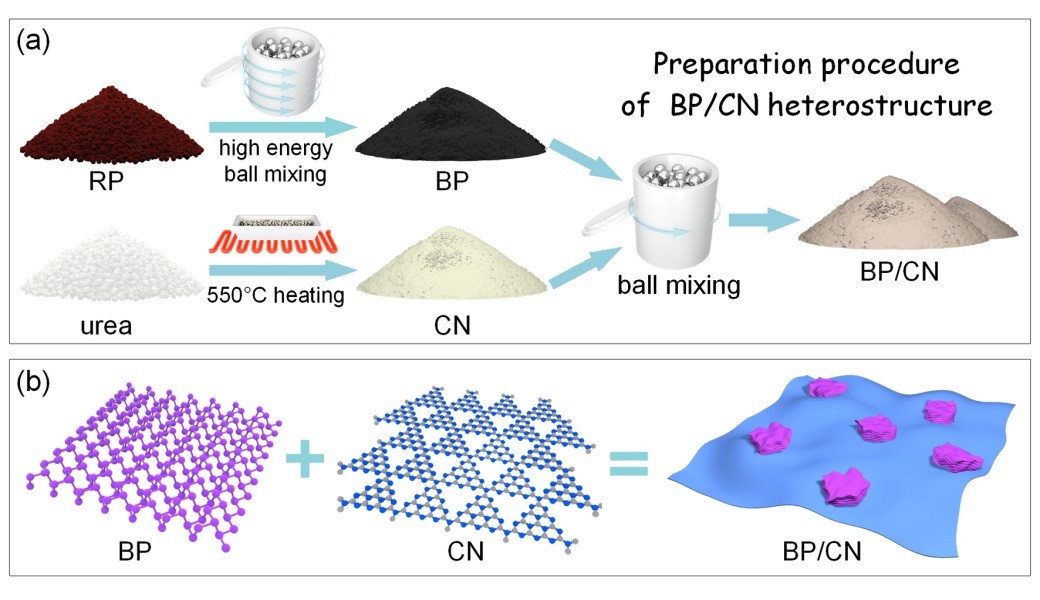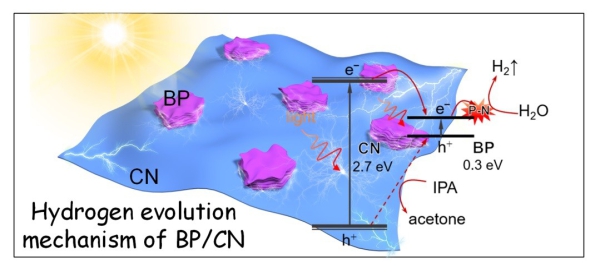A New Preparation Method for Black Phosphorus with High-Efficiency and Inexpensive Cost
Date:26-11-2018 | 【Print】 【close】
Black phosphorus (BP) holds large promise in the fields of energy and catalysis, due to its unique thickness dependent direct bandgap, the broad absorption and high charge mobility.
Scientists have developed binary metal-free heterostructures combining BP and carbon nitride (CN) for effective photocatalytic H2 evolution and dye degradation. Nevertheless, the high cost of raw material and the low yield of BP/CN heterostructures limit its long-term development and application.
Therefore, the development BP-based heterostructured catalysts with high-efficiency and inexpensive cost is of great significance.
A research team led by Prof. YU Xuefeng at the Shenzhen Institutes of Advanced Technology (SIAT) of the Chinese Academy of Sciences has recently developed a low-cost metal-free photocatalyst based on BP for effective photocatalysis. By a simple ball-milling technique, the team converted red phosphorus and urea to BP and BP/CN heterostructures with large-scale, among which the material cost of BP in the photocatalyst is estimated to be just 0.016 RMB pear gram. By holding hands (P-N bonds), BP and CN interact to form a stable binary (Figure 1).
The BP/CN heterostructure shows broad absorption, effective charge separation and possesses abundant active sites, giving rise to excellent photocatalytic performance. Without using a co-catalyst, the metal-free BP/CN emits H2 consistently at a rate as large as 786 μmol·h-1·g-1 and RhB is decomposed in merely 25 mins during visible light irradiation. The corresponding electron/hole transfer and catalytic mechanisms are analyzed and described (Figure 2).
" The simple, economical and scalable synthesis of the nontoxic metal-free catalysts is pursued and essential. I hope the technology we have developed here will go some way to speeding up the process for the design and the preparation of heterostructures. After all, the ball milling technique can be served as a general technique to produce heterostructures on a large scale.” said Prof. Yu.
The study entitled “A Low‐Cost Metal‐Free Photocatalyst Based on Black Phosphorus.” was published on Advanced Science.

Figure 1. (a) Preparation procedures and (b) Structures of the BP, CN and BP/CN heterostructure

Figure 2. The charge transfer process and mechanism of photocatalytic H2 emission